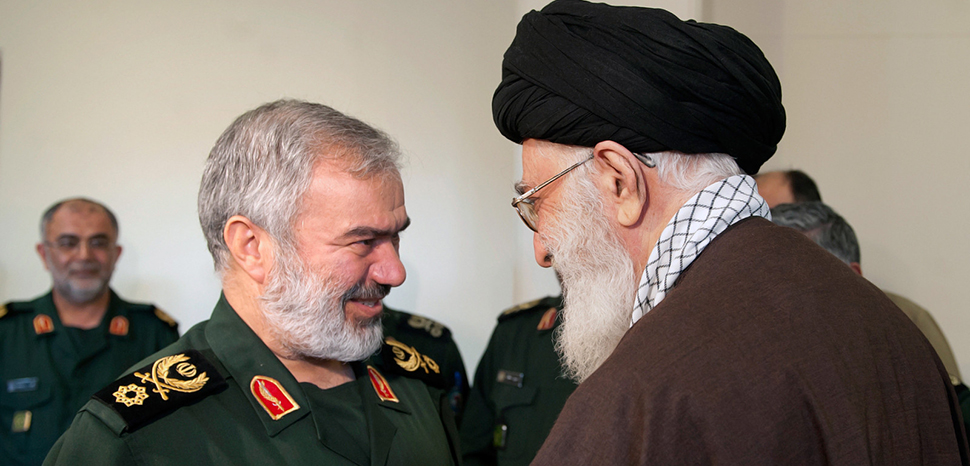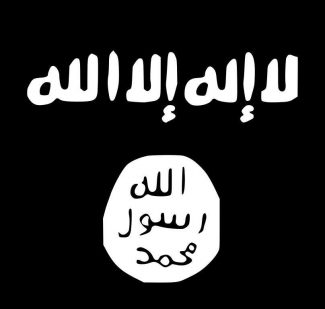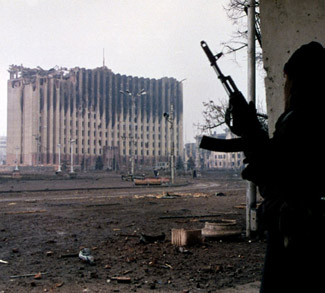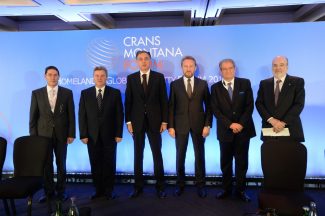The protests across the Islamic Republic are going beyond those of 2019 and 2009. They are certainly rocking the Islamic republic. But will they succeed in rolling it? The protesters have called for a three-day general strike. And observers warn: “even if it were confirmed, the abolition of the morality police (Gasht-e Ershad) would not stop the protest.” Indeed, there’s the sense that the protesters are gaining momentum after three months of street demonstrations and that something is moving. And even if the news of the abolition of the morality police isn’t true – widely circulated in the media but never officially announced by the authorities (it was announced by the judiciary not the government) – the mere fact that the issue is being discussed conveys a clear message: Iranian institutions are cornered and they’re trying to show an ‘open-minded’ approach without, however, committing to significant concessions. Meanwhile, activists have called for three days of national strikes and protests that threaten to paralyze the country.
Shops and markets in various cities have been closed since today and the boycott of classes continues in various universities just two days after December 7, when ‘student day’ is celebrated in Iran and President Ebrahim Raisi is scheduled to give a speech at one of the universities. Notably, the strikes also involved truck drivers and some workers at the petrochemical plants in Mahshahr and the steel mills in Isfahan. The Revolutionary Guards said the security forces would show “zero tolerance” towards what they called rebels and terrorists. Protests in the country have followed since the death, on September 16 in Tehran, of Mahsa Amini, a 22-year-old of Kurdish origin who died while in the custody of the morality police because she did not wear the veil correctly. Since then, according to human rights organizations, reports claim that over 400 protesters have been killed and 18,000 people have been arrested. The wave of protests triggered by the killing of the young student has quickly turned into an anti-system wave and constitutes – according to various observers – the most serious threat to the stability of the Islamic Republic for years.
Popular uprisings have been frequent in the history of Iran and even earlier, when Iran was called Persia. Still before the interpreting the protests as a full-scale Revolution, any analysis of the situation should avoid the Twitter and social media-friendly simplifications, which have been amplified by a foolish Western media. There is no doubt that there have been widespread, resilient and most of all spontaneous demonstrations (that is, the government’s suggestion that the revolts are triggered by external elements does not pass scrutiny). As the various protests have shown, millions of Iranians have been demanding a more liberal, modern and developing Iran for years. But, the reality is more complex.
The Islamic Republic is characterized, even in the precarious phase of the past few years, by deep divisions that go far beyond matters of religion. And the struggle engages different generations as well as different religious and military institutions. One of the overriding complexities is that despite the Islamic Revolution and its de-jure theocratic Constitution, an ever-larger number of Iranians are not religious at all. Iranian society is well educated and not as radicalized as in other Muslim countries. And if the 1979 Revolution succeeded in overthrowing the Shah, it was also because the ayatollahs received significant support from secular elements such as the Tudeh Party (the ‘Left’) and socialists like Abol-Hassan Bani Sadr or Sadeq Qobtzadeh (both of whom occupied important institutional posts in the immediate aftermath of the Revolution), influenced by the intellectual Ali Shar’iati, who theorized a combination of Islamic and Socialist political philosophy. In contrast, many Iranians, who in the past supported Khomeini’s revolutionary “reforms,” still believe in a more conservative state closely linked to the principles and precepts of the Quran and consider the West and Saudi Arabia (Sunni) as a strategic existential threat. Still, the outcome of the protests, should they succeed in fracturing the leadership and overturning the theocratic order is completely unclear.
Even if it’s premature to propose, as have Nobel laureate Shirin Ebadi and Farideh Moradkhani (Ayatollah Khamenei’s own niece), that the world is witnessing “the beginning of the end of the Iranian regime,” there can be little doubt that a return to the status-quo is not possible, and that the protests will lead to changes, probable attempts at reform, and possible state collapse. But, whether or not they will lead to the freedom advocated by the protesters is not a given outcome; it’s another question altogether. The protests are certainly challenging the legitimacy of the Iranian government and they carry the momentum of the widespread economic and social dissatisfaction, which had already exploded in a much more structured way in 2019. Those protests were, even more than the 2009 ones, a very broad and cross-class movement that challenged the system also in part triggered by the failed efforts of then (reformist) president Hassan Rohani to secure the promised relaxation of Western economic sanctions following US President Trump’s repeal of the 2015 JCPOA nuclear deal. Rohani’s attempts were dashed by the US administrations as well as elements within the Iranian government, reluctant to offer concessions to the West – namely reducing (if not outright cutting) aid for Hezbollah in Lebanon, support for the Syrian government of Bashar al-Asad, and diluting the government’s nationalist temperament. Indeed, while there are no political parties as in many West-inspired democratic systems, there are factions in the Islamic Republic that might be broadly described as conservatives, reformists, and pragmatists.
So far, however, the Iranian government – and the Supreme leadership in particular – has succeeded in legislatively and steadily limiting the influence of the reformists and pragmatists – even if the two respective camps have had presidents (Khatami and Rohani) to represent them. Khatami and Rohani would have had far greater success at changing the Islamic Republic from within, had they enjoyed more support from the United States – that is a lifting of sanctions. That would have strengthened the more democratically and secularly oriented segments of the population. It is not clear how long the current regime will last, but current events demonstrate some aspects of the ability of the two sides: the first modernist side tends towards the future and even personal innovation, while the second aspires to keep Iranian society in the domain of narrow areas linked to strict observance of both religion and its political representation.
The continued sanctions and the lifting of the JCPOA have strengthened the conservative factions in the Iranian parliament, the Majles, and in society at large. Therefore, Khamanei was able to narrow down the range of candidates eligible for election. And, even if in recent years the Ayatollahs have focused on Iran’s internal socio-economic development and political stability, their supporters are typically defenders of the hard line inspired by the religious body of the 1979 Revolution. Moreover, while many Iranians may wish for a more liberal and more “Western” society, all Iranians harbor feelings of distrust of the United States, Russia, Europe and their Arab neighbors. The list of nefarious Western interference examples is long. Apart from the well-known 1953 overthrow of the democratically elected and secular (but nationalist) Mossadegh government, It is still studied in history textbooks that Iran was a victim of Western “imperialism” which in turn dates back to the British tobacco monopoly of 1890-1892 and the D’Arcy oil concession of 1901.Along the same lines followed the entry into the area of the Anglo-Persian Oil Company, later the British Petroleum Company (BP) in 1933. Which gave Britain de facto control over Iran’s main source of currency and industry until at least in the mid-1950s.
Therefore, it’s important to note that whereas the recent street demonstrations have made it clear that a significant number of Iranians want the regime to be more tolerant – especially towards women – and to focus more on the social development of internal relations as well as on the progress of the economy aimed at the benefit of all strata of the population, at the same time, many Iranians believe that Iran’s actions are either not aggressive as much as they are defensive. Without having to resort to past history, Iranians have even more current reasons to distrust the West. While Iranians are nationalist – much more than their Arab neighbors – it should be noted that this does not mean that most Iranians support the efforts of the Supreme Leader and the IRGC to expand Iran’s influence and control in the region. Politicians and analysts should take these and other similar conflict situations into account because if Iran’s history and intentions are ignored, any serious geopolitical analysis useful for making decisions becomes superfluous.
So is it a Revolution? Not quite yet. There is one major obstacle to surmount. A bigger obstacle than the Russian proletariat faced in October 1917 when it confronted the Czar’s guards – many of whom were sympathetic and less inclined to shoot. The IRGC has too much to lose to let go peacefully.
The IRGC
The IRGC is the powerful “Islamic Revolutionary Guard Corps,” better known as the “Guardians of the Revolution” or pasdaran. It is a militarized body that Ayatollah Khomeini established in Iran after the 1979 Islamic revolution because he did not believe he could count on loyalty from the regular armed forces. Today, the IRGC remain by oath absolutely faithful to the Islamic nature of the Republic and to the Supreme Leader and it is by far the most powerful Iranian military corps, which in addition to reporting directly to the Supreme Leader also has huge economic interests in the country. The Revolutionary Guards are made up of around 300,000 people, most of whom would lose power, wealth or, to put it even more succinctly, their salary if the regime were to fall. Foreign Policy noted some time ago that the Revolutionary Guards could be ready to drag Iran into civil war, just to protect the regime (and their obvious interests). The scholar Ali Alfoneh has suggested – and many agree – that the IRGC would stage a coup against the ayatollahs and take over directly in the event of a full-scale revolution. The IRGC’s loyalty is not towards the Iranian people or against the state, but exclusively weighed against the Islamic Republic, i.e. the current regime, because if the regime fell, the Revolutionary Guards too would probably be dispersed.
Over the years, the Revolutionary Guards have grown into not only a military body, but also an instrument of internal repression and a center of economic power: given their broad ability to move internationally, the Revolutionary Guards are among the very few groups in Iran to manage to avoid international economic sanctions, to import smuggled goods and raw materials, and to accumulate enormous wealth thanks to the proceeds obtained. Indeed, the IRGC benefits from sanctions; because, the sanctions render them indispensable to the normal flow of daily life in Tehran. While alcohol and narcotics are officially banned, a friend has informed me that it’s very easy for to secure the home delivery of a variety of spirits, alcoholic beverages and other white-powdered stimulants at any private residence: just call an IRGC representative you trust. They’re in charge of protecting the tenets of the Islamic Republic, and they’re also in charge of its citizens’ debauchery. The ‘Iran’ scene in the film Syriana by George Clooney is one of the most accurate depictions of life in the Islamic Republic ever captured by American cinema.
The IRGC is different from the army: it answers directly to the Supreme leader and remains above all other institutions borne out of the 1979 Revolution. Over time, the Revolutionary Guards became known throughout the world mainly for the operations carried out by their feared elite unit, the al Quds Forces, which until three years ago were led by General Qassem Suleimani, one of the most powerful, famous and feared Iranians. Under Suleimani, the al-Quds Forces carried out a great many covert operations abroad, and became experts in the so-called “asymmetric warfare”, i.e. a war where one side (the other, in this case) is clearly superior in terms of resources and power. The Quds Forces have trained groups such as Hamas in Palestine and Hezbollah in Lebanon, but also numerous Shiite militias in Syria and Iraq. For the past three decades, the al-Quds forces have been to Iran what the CIA and Special Forces combined have been to the United States: a powerful yet elusive intelligence, military and foreign policy tool.
Another very important aspect of the Revolutionary Guards is their exceptional economic power. The Guards directly and indirectly control billions of dollars in contracts in the fields of construction, electricity supply, engineering, telecommunications and media, and continue to do so despite the international sanctions imposed on them in recent years.
The Revolutionary Guards were directly involved in the violent suppression of the protests. It happened in 2009, with the so-called “Green Wave,” which mainly concerned the bourgeoisie of the capital Tehran demonstrating against the rigged election of the conservative president Mahmoud Ahmadinejad. It happened again with the protests of 2019, which instead concerned more the working classes and were caused by the sharp increase in the price of fuel. Security forces killed around 1,500 people in 2019, and the Revolutionary Guards were responsible for some of the most heinous massacres. It is also happening in the protests of recent months, in which the Guards have become among the main perpetrators of the brutal repression. More than 400 people have been killed so far, and over 15,000 arrested. The fact that the Revolutionary Guards are a very strong center of military, economic and ultimately political power is a serious problem not only for those who, like the Iranian protesters, would like to overthrow the regime, but also for those who would simply like to reform it. The Revolutionary Guards depend on the regime, and the power, wealth and income of hundreds of thousands of people depend on the Revolutionary Guards. To these are added hundreds of thousands of people who depend on other bodies, such as the police and the regular army.
Just a Diversion?
Meanwhile, the words of the attorney general Mohammad Jafar Montazeri who said during an interview that the morality police “has been abolished,” have become a case in point. Revealed around the world as an initial sign of openness, the news has never been confirmed by the Tehran government, however. “The morality police has nothing to do with the judiciary, and it was abolished by whoever created it,” Montazeri said in response to a question about why the police force created by then-President Mahmoud Ahmadinejad in 2006 was not seen more in the streets. After a few hours of euphoria among the supporters of the protests, appeals from activists and observers were posted on social networks calling for calm and not to be deceived by propaganda. According to some, the move was merely a diversion to calm tensions. How could the announcement – also by Montazeri – be a diversion, according to which the legislation providing the obligatory veil for women is under discussion? The Parliament and the Supreme Council of the cultural revolution – said the prosecutor – are studying the question and will announce the results within two weeks.
What is the morality police? Iran has had various forms of ‘morality police’ since the Islamic revolution in 1979. Its latest version – formally known as the Gasht-e Ershad (Orientation Patrols) – is the main force charged with enforcing the code of conduct Islamic law in the country. It was established in 2006 by then President Ahmadinejad enforce the dress code, which also requires women to wear long dresses and bans shorts, ripped jeans, and other clothing deemed ‘immodest’ or not in line with religious dictates. The units, usually composed of multiple men and women, use white police vans with dark green stripes to patrol the streets or park in spots frequented by pedestrians or young people. Its officers claim to enforce the dress code which requires women to cover their hair and wear loose clothing. For violations, they issue verbal warnings and can decide to detain the women arrested by taking them, as happened in Mahsa Amini, to “re-education” centers.
Too Little Too Late?
If confirmed, the end of the obligation to wear the veil would be a very important victory for the protesters. But it is said that it would be enough to stop the protests. “Just because the government has decided to dismantle the morality police does not mean that the protests are ending – an Iranian woman commented yesterday on the BBC’s Newshour program – even if the government said that the hijab is a personal choice it would not be enough. People know that Iran has no future with this government in power.” Witnessing the change of ‘nature’ of the demonstrations, transformed from a protest movement to a counter-revolution, is the fact that from the squares and streets, the protests have progressively infiltrated universities, high schools and factories, the scene of several strikes. A change that also affects the protagonists: if the revolt had been launched by the young women, who were later joined by male and female students, now it seems to be above all the men who take center stage, in the clashes against the forces of the order. “Even assuming that the morality police is eventually abolished, it is unlikely that the protesters’ demand for regime change will be satisfied by such minor changes as those relating to the application of religious practices by the Islamic Republic,” according to Sara Bazoobandi in comments to ISPI… “the prosecutor’s comment distracted the global media from the ongoing tensions and gross human rights violations by the Iranian government, without providing any tangible solution to the discontent.”




